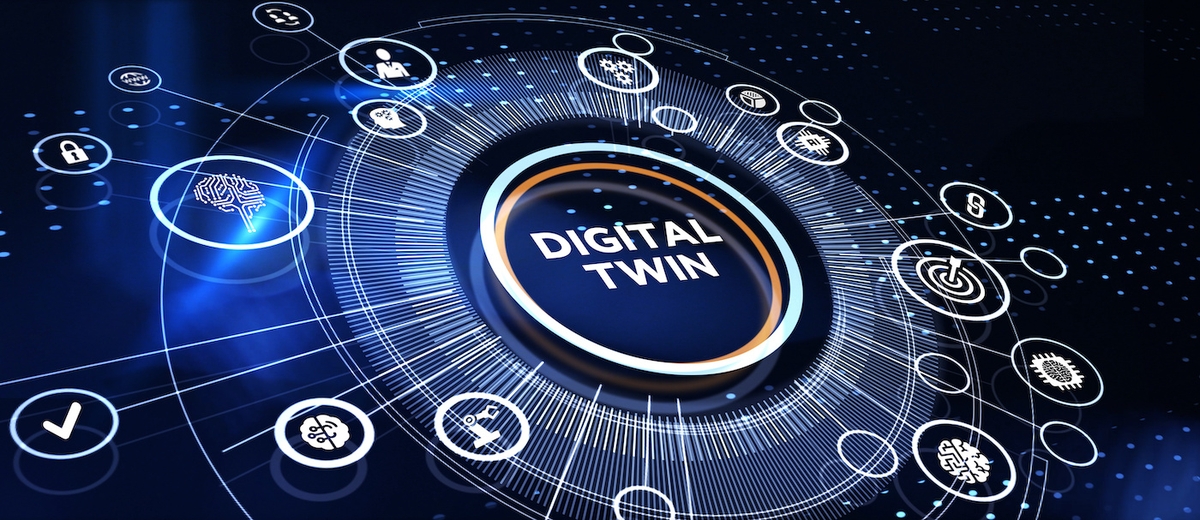
Digital Twins: Revolutionizing Industries with Data-Driven Replicas
The realm of digital twin technologies is undergoing a transformative expansion, transcending its origins in manufacturing to make a significant impact on emerging fields such as data analytics, artificial intelligence, and the Internet of Things (IoT).
In this article, we'll go deep into the concept of digital twins, how they work, the different types, their advantages, and their applications in various industries.
Improving Sentence Structure
The use of digital twin technologies has extended its reach beyond the confines of manufacturing and has ventured into the burgeoning fields of data analytics, artificial intelligence, and the Internet of Things (IoT).
What is a Digital Twin?
A digital twin is a computer software that utilizes real-world data about a physical object or system as input to generate simulations or predictions about how those inputs will impact the physical counterpart as an output. It serves as a virtual replica of a physical device or system. The concept of a digital twin is rapidly gaining prominence within the framework of Industry 4.0.
How Digital Twins Work
Digital twins are designed to acquire data from sensors collecting information from their physical counterparts. This enables the digital twin to mimic the physical object in real time, providing valuable insights into its functionality and potential issues. In some cases, a digital twin may even serve as a prototype in its own right before the physical counterpart is constructed, thus saving both time and money in the development and testing phases of a product or process.
Types of Digital Twins:
Digital twins come in various forms, depending on the level of object augmentation:
- Component Twins: These are digital representations of specific components of a system or product, such as gears or screws. They are instrumental in understanding how these components behave under specific conditions, thus maintaining overall product integrity.
- Asset Twins: Also known as product twins, these virtual replicas represent entire physical objects, showing how various components interact and generating a wealth of performance data that can be analyzed for valuable insights.
- System or Unit Twins: These digital twins represent product systems in action, enhancing the understanding of how different assets interact within a larger system and ultimately boosting productivity and efficiency.
- Process Twins: Process twins are digital representations of interconnected systems, modeling complex processes, such as factory operations, down to the actions of individual workers. They enable businesses to identify and address timing issues affecting overall efficiency.
Benefits of Digital Twins:
Digital twins offer numerous advantages, including:
- Cost Cutting: Virtual testing and fine-tuning of systems or products before physical production can significantly reduce overall costs.
- Predictive Maintenance: By continuously monitoring performance and detecting issues early, physical assets can receive timely maintenance, extending their operational life.
- Accelerated Risk Assessments and Production Time: Real-time data and simulations allow for quick testing of modifications, leading to operational efficiency improvements.
- Effective Teamwork: Process automation and easy access to real-time data promote inter-team collaboration, increasing productivity.
- Improved Financial Judgment: Real-time data and powerful analytics help businesses make more informed decisions regarding changes to the manufacturing value chain.
Applications of Digital Twins:
Digital twins find applications across various industries, including:
- Industrial Processes: They are essential for mirroring the entire lifecycle of a product, from design to production, and every step in between.
- Medical Services: Patients' health profiles can be created using digital twins, offering insights into their well-being.
- Automobile Sector: Digital twins enhance vehicle performance and production economy by modeling intricate, interconnected systems.
- Urban Sector: Urban planners benefit from real-time 3D and 4D spatial data, incorporating augmented reality systems into constructed environments.
Conclusion
The digital twin market is on a rapid growth trajectory. According to Gartner, 13% of companies involved in IoT initiatives already use digital twins, and 62% have plans to implement them. The digital twin market is projected to grow from $3.8 billion in 2020 to a staggering $35.8 billion by 2025, with a remarkable CAGR of 37.8%.
Digital twin technology is proving essential for manufacturers aiming to streamline production processes and reduce time to market. Its transformative potential is bound to revolutionize industries and drive innovation in the coming years.
About Rang Technologies
Rang Technologies, based in New Jersey, has dedicated over a decade to delivering innovative staffing solutions and the best talent to help businesses of all sizes unlock the full potential of the latest technologies and build high-performing teams to achieve their digital transformation goals.